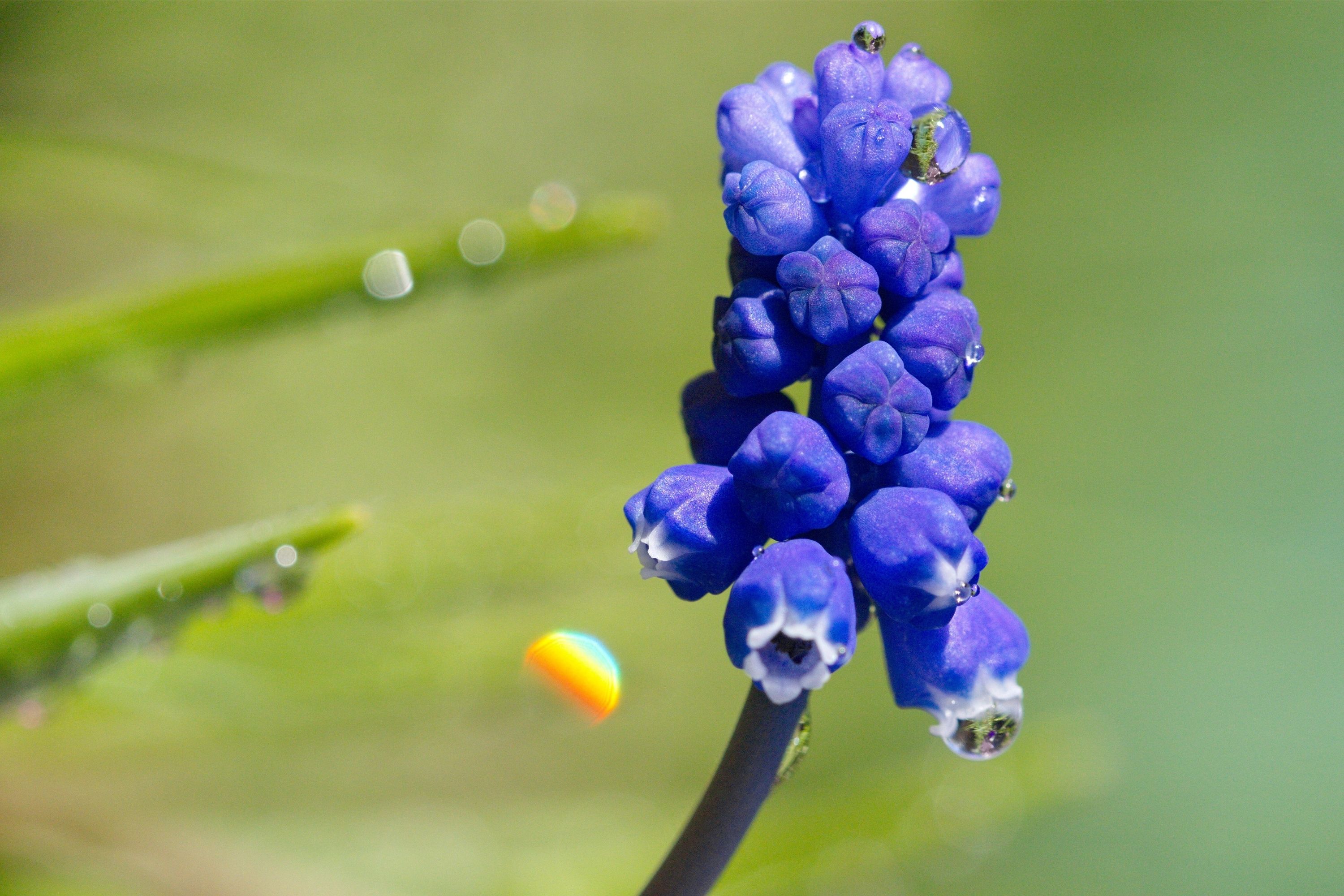Muscari anatolicum
(Muscari anatolicum)

Description
Muscari is a genus of perennial bulbous plants native to Eurasia that produce spikes of dense, most commonly blue, urn-shaped flowers resembling bunches of grapes in the spring. The common name for the genus is grape hyacinth (a name which is also used for the related genera Leopoldia and Pseudomuscari, which were formerly included in Muscari), but they should not be confused with hyacinths. A number of species of Muscari are used as ornamental garden plants. The genus Muscari originated in the Old World, including the Mediterranean basin, central and southern Europe, northern Africa, western, central and south-western Asia. It has become naturalized elsewhere, including northern Europe and the United States. Brian Mathew says that many species of grape hyacinths, including not only Muscari but also the related Leopoldia and Pseudomuscari, are difficult to distinguish. They usually have one or more narrow leaves which arise from a bulb. The flowers appear in the spring and form a spike or raceme, being held in a close or loose spiral around a central stalk. The flowers often become less tightly spaced as the flower matures. The flower colour varies from pale blue to a very dark blue, almost black in some cases (albino forms are also known). In some species the upper flowers may be of a different colour and shape to the lower flowers. Individual flowers are composed of six fused tepals forming a spherical to obovoid shape, constricted at the end to form a mouth around which the ends of the tepals show as small lobes or "teeth", which may be of a different colour to the rest of the tepal. The use of muscari as part of the name of at least some of the species included in the modern genus can be traced back to Carolus Clusius in 1601, long before the modern rules of botanical nomenclature were established. In 1753, Carl Linnaeus used the name Hyacinthus muscari for the plant now called Muscari racemosum.In 1754, Philip Miller formally established the genus Muscari according to modern rules of nomenclature.The name muscari comes from the Greek muschos, musk, referring to the scent. Classified in the family Asparagaceae, subfamily Scilloideae,the genus was formerly placed in the Liliaceae as a member of the tribe Hyacintheae. There are about forty species. The genus was at one time divided into four groups or subgenera: Botryanthus, Pseudomuscari, Leopoldia and Muscarimia.Pseudomuscari and Leopoldia are now treated as separate genera.
Taxonomic tree:







